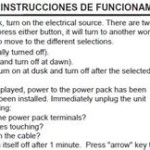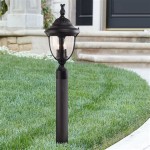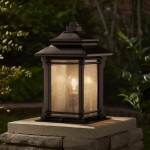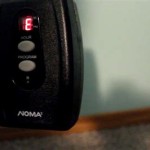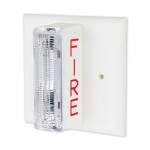Step Strip Lights Outdoor
Outdoor step lights enhance safety and aesthetics, illuminating pathways and staircases for improved visibility at night. Step strip lights offer a sleek, modern alternative to traditional step lighting, providing a continuous band of light that accentuates architectural features while ensuring safe passage in dimly lit areas.
Key Considerations for Choosing Outdoor Step Strip Lights
Selecting the right outdoor step strip lights involves evaluating several crucial factors to ensure both functionality and longevity. These factors influence the brightness, durability, and overall suitability for the intended application.
- Brightness and Lumens: The required brightness depends on the location and purpose. Brighter lights are generally preferred for steps leading to entrances, while softer lighting might suffice for garden pathways.
- IP Rating (Ingress Protection): The IP rating indicates the level of protection against dust and moisture. Outdoor step lights should have a minimum IP65 rating to withstand rain and dust exposure, while IP67 or higher is recommended for areas prone to splashing or submersion.
- Voltage: Step strip lights are available in various voltage options, including low-voltage (12V or 24V) and line voltage (120V). Low-voltage options are generally safer and easier to install, often requiring a transformer.
- Color Temperature: Color temperature affects the ambiance and visibility. Warm white (2700K-3000K) creates a cozy atmosphere, while cool white (4000K-5000K) offers better visibility and a more modern aesthetic.
- Material and Durability: High-quality materials, such as aluminum or stainless steel, ensure weather resistance and longevity. Look for lights with robust construction to withstand environmental elements and foot traffic.
Installation Methods for Outdoor Step Strip Lights
Proper installation is essential for the performance and safety of outdoor step strip lights. Different installation methods cater to various step designs and materials.
- Recessed Mounting: This method involves embedding the strip lights within a groove or channel cut into the step riser, providing a flush and seamless appearance. Precise measurements and careful cutting are critical for a clean installation.
- Surface Mounting: Surface mounting involves affixing the strip lights directly to the step riser using adhesive backing or mounting clips. This method is generally easier than recessed mounting and suitable for various step materials.
- Under-Step Lighting: Installing the strip lights beneath the step overhang creates a subtle, dramatic effect, highlighting the step edges and providing indirect illumination.
Powering Outdoor Step Strip Lights
Supplying power to outdoor step strip lights requires careful planning to ensure safe and reliable operation. Various power options exist depending on the voltage and location of the lights.
- Low-Voltage Transformers: Low-voltage strip lights typically require a transformer to convert line voltage to the appropriate low voltage. The transformer should be located in a weatherproof enclosure and sized appropriately for the total wattage of the lights.
- Direct Wiring: Line voltage strip lights can be directly wired to the electrical system. This method requires compliance with local electrical codes and may necessitate the expertise of a qualified electrician.
- Solar-Powered Options: Solar-powered step strip lights offer an eco-friendly and cost-effective solution, eliminating the need for wiring. They rely on solar panels to charge internal batteries, providing illumination at night.
Benefits of Using Outdoor Step Strip Lights
Outdoor step strip lights offer a range of advantages over traditional step lighting, contributing to both safety and aesthetics.
- Enhanced Safety: Improved visibility reduces the risk of tripping and falling, especially in dimly lit areas.
- Modern Aesthetics: Step strip lights provide a sleek, contemporary look that complements modern architectural styles.
- Energy Efficiency: LED step strip lights consume less energy than traditional incandescent bulbs, reducing electricity costs.
- Customization Options: Strip lights are available in various lengths, colors, and brightness levels, offering flexibility in design and application.
Maintenance and Troubleshooting
Maintaining outdoor step strip lights ensures optimal performance and prolongs their lifespan. Regular checks and simple troubleshooting steps can address common issues.
- Cleaning: Periodically clean the lights with a soft cloth to remove dust and debris that can obstruct light output.
- Checking Connections: Ensure all connections are secure and free from corrosion. Loose connections can lead to flickering or power outages.
- Replacing Damaged Sections: If a section of the strip light fails, it may be possible to replace the damaged segment rather than the entire strip.
Safety Precautions
Adhering to safety precautions during installation and operation is crucial to prevent accidents and ensure the safe functioning of outdoor step strip lights.
- Disconnect Power: Always disconnect power before working on any electrical components.
- Weatherproof Connections: Ensure all connections are properly sealed and protected from moisture.
- Grounding: Proper grounding is essential to prevent electrical shocks.

Solar Powered Led Strip Lights Stairs Step Outdoor Waterproof For Gazebo Canopy Pool Decor Light Made In China Com

Garden Ideas Club

Light Up The Steps And Be Safe Hardware Journal

24v Waterproof Recessed Silicone Side Emitting Flat Led Strip Lights For Step And Deck Lighting

Buy Outdoor Step Light Strip Stair Lights Paneralux

Outdoor Step Lights Archives Thelight Pk

36 Perfect Outdoor Steps Lighting Ideas Shelterness

Led Lights And Replacement Bulbs

Solar Powered Led Strip Lights Stairs Step Outdoor Waterproof For Gazebo Canopy Pool Decor Light Made In China Com

The Top 5 Ways To Light Outdoor Stairs
Related Posts
